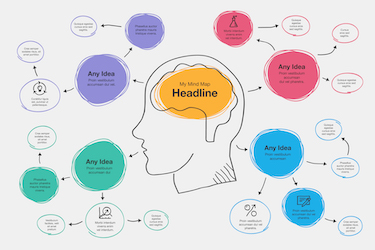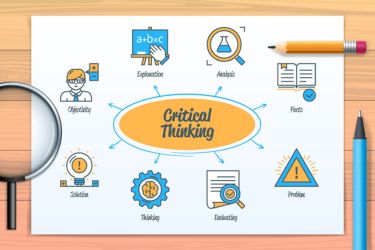Machine learning is a powerful area within artificial intelligence that allows systems to learn and improve from experience. In simple terms, machine learning enables computers to make predictions or decisions without being explicitly programmed for every single task. With its ability to analyse vast amounts of data, it’s transforming industries and redefining how we interact with technology daily.

As we explore the various algorithms and techniques that underpin this field, we'll see how data management and the integration of deep learning frameworks play a crucial role. Understanding these fundamentals not only enhances our knowledge but also equips us to better comprehend the challenges and emerging trends shaping the future of machine learning in data science.
Key Takeaways
- Machine learning allows computers to learn from data without specific programming.
- Understanding algorithms and data management is essential to harness machine learning's full potential.
- Emerging trends indicate that machine learning will continue to shape the future of technology and data science.
Fundamentals of Machine Learning

Machine learning is a vital part of modern technology. It involves various concepts and methods that allow computers to learn and make decisions from data. In this section, we will explore key elements that form the foundation of machine learning.
Core Concepts and Terminology
At the heart of machine learning are several core concepts. Algorithms are step-by-step procedures used to analyse data. They enable machines to learn from past experiences and improve over time.
Machine learning can be broadly categorised into three types: supervised learning, unsupervised learning, and reinforcement learning.
- Supervised Learning: This method uses labelled data to train models. The system learns from input-output pairs.
- Unsupervised Learning: Here, algorithms work with unlabelled data. They identify patterns without predefined labels.
- Reinforcement Learning: This type teaches algorithms through trial and error. Agents learn to make decisions by receiving feedback for their actions.
History and Evolution of Machine Learning
The roots of machine learning can be traced back to the 1950s. Early research focused on algorithms and neural networks. Scientists aimed to create systems that could mimic human intelligence.
In the 1980s, interest grew with the advent of artificial neural networks (ANN). These models were inspired by biological processes in the brain. As computational power increased, so did the complexity of algorithms.
The 2000s marked a turning point. The rise of big data provided the necessary resources for advanced machine learning techniques. Companies started applying these methods for personalised recommendations, fraud detection, and more.
Types of Machine Learning
We can classify machine learning into three major types as mentioned earlier. Each type serves unique purposes and uses different methodologies.
- Supervised Learning involves training on labelled data. We provide the system with both input and expected output.
- Unsupervised Learning is used when we have no labels. The focus is on discovering hidden patterns in the data.
- Reinforcement Learning trains agents to make decisions based on rewards or penalties. This dynamic approach is useful in gaming and robotics.
Understanding these types equips us to apply machine learning effectively in various fields, from healthcare to finance.
Data Management in Machine Learning

In machine learning, effective data management is crucial to our success. We rely on proper data collection, preparation, and a focus on quality to build accurate models. Below, we explore the key aspects of this process.
Data Collection and Preparation
When we gather data for machine learning, we must consider various factors. Data should be relevant, diverse, and comprehensive to form effective datasets. We can collect data from multiple sources, such as databases, APIs, or even through web scraping.
Once we have our data, preparation is essential. This step involves cleaning the data by removing duplicates or errors, which ensures better quality. Additionally, we might perform data normalisation, which scales our data to a standard range.
Here are some important steps in this phase:
- Data Cleaning: Removing inaccuracies to ensure quality.
- Feature Selection: Identifying relevant variables for our model.
- Data Transformation: Converting data formats to suit our algorithms.
Importance of Quality Data
Quality data is at the heart of reliable machine learning. We need to remember that the adage “garbage in, garbage out” holds true. If we input poor-quality data, our models will likely produce flawed results.
To ensure data quality, we should focus on three main aspects:
- Accuracy: Data must reflect the real-world situations we want to model.
- Completeness: Our datasets should contain all necessary information. Missing values can lead to misleading conclusions.
- Consistency: Data should be uniform in format and structure to avoid errors in analysis.
By prioritising these quality aspects, we enable data scientists to conduct thorough data analysis and make informed decisions, paving the way for successful machine learning applications.
Machine Learning Algorithms

Machine learning algorithms are essential tools that help us make sense of data. They can be broadly classified into different types based on how they learn from data. Two primary categories are supervised and unsupervised algorithms, each suited for specific tasks.
Supervised vs Unsupervised Algorithms
Supervised algorithms learn from labelled data. This means we provide input-output pairs during training. Common techniques in this category include classification and regression. For example, we might use a decision tree for classifying images or linear regression to predict housing prices based on features like size and location.
Unsupervised algorithms, on the other hand, deal with unlabelled data. They find patterns or groupings without predefined outcomes. Clustering is a popular method here, where we might use algorithms like K-means to group similar customer profiles, helping us identify consumer segments.
Evaluating Algorithm Performance
To understand how well our algorithms perform, we rely on various evaluation metrics. For classification techniques, we often use accuracy, precision, recall, and F1 score. These metrics help us gauge how reliably an algorithm predicts outcomes.
In regression tasks, we might measure performance using mean squared error or R-squared values. These metrics allow us to quantify how close our predictions are to actual values.
Ultimately, the choice of algorithms and evaluation methods depends on our specific problem and data characteristics. By systematically analysing these factors, we can optimise our machine learning models for better performance.
Neural Networks and Deep Learning

Neural networks and deep learning play a vital role in advancing artificial intelligence. These concepts form the foundation of many modern machine learning applications, allowing computers to learn from vast amounts of data.
Architecture of Neural Networks
The architecture of a neural network consists of layers of interconnected nodes, or neurons. Each neuron processes input data and passes its output to the next layer.
- Input Layer: This layer receives the training data. Each input corresponds to a feature in the data.
- Hidden Layers: These layers contain neurons that apply transformations and extract features. The depth of a network refers to the number of hidden layers.
- Output Layer: This layer produces the final prediction or classification result.
We use various activation functions, like ReLU or sigmoid, at each node. These functions determine how the input is transformed as it passes through the network. The entire structure is commonly referred to as an Artificial Neural Network (ANN), which is central to deep learning practices.
Deep Learning Techniques
Deep learning uses advanced techniques to improve how neural networks operate. One key technique is backpropagation. This method calculates the error by comparing the network's predictions with the actual outcomes.
- Once an error is identified, backpropagation helps adjust the weights of the connections in the network. This adjustment is crucial for training the network effectively over many iterations.
- We also leverage large datasets, known as training data, to enhance the model's accuracy. The more diverse and comprehensive the training data, the better the performance of the neural network.
Incorporating techniques like regularisation prevents overfitting, ensuring that the model generalises well to unseen data. These practices are essential for creating robust deep learning models that can perform complex tasks.
Applications of Machine Learning
Machine learning is transforming various sectors by enabling systems to analyse vast amounts of data and make predictions or decisions. Its applications span across industries, with advancements in technology opening new opportunities for improvement and innovation.
Machine Learning in Industry
In industries like finance, we see machine learning at work in fraud detection. Algorithms analyse transaction patterns to identify unusual activities. This helps banks protect their customers' assets.
In retail, recommendation engines use user data to suggest products based on past purchases. This not only increases sales but also enhances customer satisfaction by providing personalised experiences.
Pattern recognition is also crucial in healthcare. For instance, machine learning assists in diagnosing diseases by recognising patterns in medical images, like X-rays or MRIs. This can lead to earlier and more accurate detection of conditions.
Emerging Areas and Research
As technology evolves, new areas for machine learning emerge. Natural language processing (NLP) is one such field. We leverage NLP to improve how computers understand and interpret human language. This is evident in chatbots and virtual assistants.
Moreover, speech recognition systems are becoming increasingly reliable. Applications like voice-activated controls and transcription services are changing how we interact with devices.
Another fascinating area is gene sequence analysis. Machine learning models can process genetic data much faster than traditional methods, aiding in research and drug discovery. This underscores the potential of machine learning to revolutionise fields beyond traditional technology.
Challenges in Machine Learning
Machine learning presents several challenges that can impact its effectiveness and ethical use. Addressing data bias and ensuring model reliability are crucial areas that we must navigate carefully to harness the true potential of machine learning.
Addressing Data Bias and Ethics
Data bias occurs when the training data reflects existing prejudices. This can lead to unfair outcomes in our models. For instance, if we use biased data to train algorithms, they may discriminate against certain groups.
We need to focus on fairness by ensuring diverse and representative datasets. Regular audits can help us identify and mitigate bias in our models.
Ethical considerations should also guide our work. This involves being transparent about how our models make decisions. We must adhere to strict data security practices to protect sensitive information and maintain user trust.
Ensuring Model Reliability and Trust
Model reliability is vital for effective machine learning applications. If our models are not accurate or consistent, users may lose faith in our systems.
One common challenge is overfitting, where models perform well on training data but poorly in real-world scenarios. We must balance complexity and simplicity in our models to enhance generalisation.
We can use techniques such as cross-validation to test our models on different data sets. Regular updates and maintenance are also essential for maintaining reliability. By focusing on these aspects, we can build trustworthy models that users can depend on.
Emerging Trends and the Future of Machine Learning
Machine learning continues to evolve rapidly, driven by innovative methods and real-world applications. We will explore important areas such as interdisciplinary collaboration and emerging trends that shape the future of machine learning.
Interdisciplinary Advances in AI
We see notable advancements in machine learning methods by integrating knowledge from various fields. Collaboration between data scientists, software engineers, and domain experts enhances our capability to harness ML technologies effectively.
For instance, in healthcare, AI algorithms can analyse vast datasets for more accurate disease predictions. Similarly, the involvement of experts in psychology and sociology helps develop adaptive algorithms that better understand human behaviour.
Moreover, genetic algorithms are gaining traction, allowing us to optimise solutions by mimicking natural selection. This interdisciplinary approach not only broadens our understanding but also leads to innovative applications across sectors, improving system robustness and efficiency.
Future Prospects in Machine Learning
As we look ahead, the future of machine learning appears promising with several key trends. Continuous learning will enable algorithms to improve over time by adapting to new data, making them more effective and reliable.
Moreover, we are witnessing a rise in AI applications across various sectors, including finance, transportation, and cybersecurity. Enhanced security algorithms will play a crucial role in protecting sensitive data.
We should also pay attention to the growth of AutoML, which simplifies the process of deploying machine learning models. This will allow more businesses to access and implement AI solutions without extensive expertise, fostering greater innovation and competitiveness.
Frequently Asked Questions
In this section, we address common queries surrounding machine learning. From its core principles to applications and recommended resources, we clarify essential concepts to deepen our understanding.
What constitutes the fundamental principles of machine learning?
The fundamental principles of machine learning include concepts such as algorithms, data, and models. We use algorithms to analyse data and create models that can make predictions or classify information. These models learn from the data provided, adapting to improve their accuracy over time.
How do various types of machine learning differ?
There are three primary types of machine learning: supervised, unsupervised, and reinforcement learning. Supervised learning uses labelled data to train models. Unsupervised learning works with unlabelled data to identify patterns. Reinforcement learning teaches models through trial and error, focusing on achieving specific goals.
Could you explain the distinction between artificial intelligence and machine learning?
Artificial intelligence (AI) is a broader field that encompasses the creation of smart machines capable of performing tasks that typically require human intelligence. Machine learning, however, is a subset of AI that specifically focuses on the development of algorithms that allow machines to learn from data.
What examples best illustrate the application of machine learning in real-world scenarios?
Machine learning finds applications in various fields. For instance, it powers recommendation systems on streaming services, enhances image recognition in photography, and improves medical diagnosis in healthcare. These examples demonstrate how machine learning can solve practical problems by analysing vast amounts of data.
Which algorithms are most crucial to the field of machine learning?
Several algorithms are central to machine learning, including linear regression, decision trees, and neural networks. Each algorithm serves different purposes, with linear regression used for predicting continuous outcomes, while neural networks excel in recognising complex patterns. Understanding these algorithms is vital for anyone entering the field.
What resources are recommended for beginners to learn about machine learning?
For those starting in machine learning, several resources are invaluable. Online courses, such as those offered by platforms like Coursera or DataCamp, are great for structured learning. Additionally, books like "Hands-On Machine Learning with Scikit-Learn, Keras, and TensorFlow" provide practical insights to develop skills in this area.





















